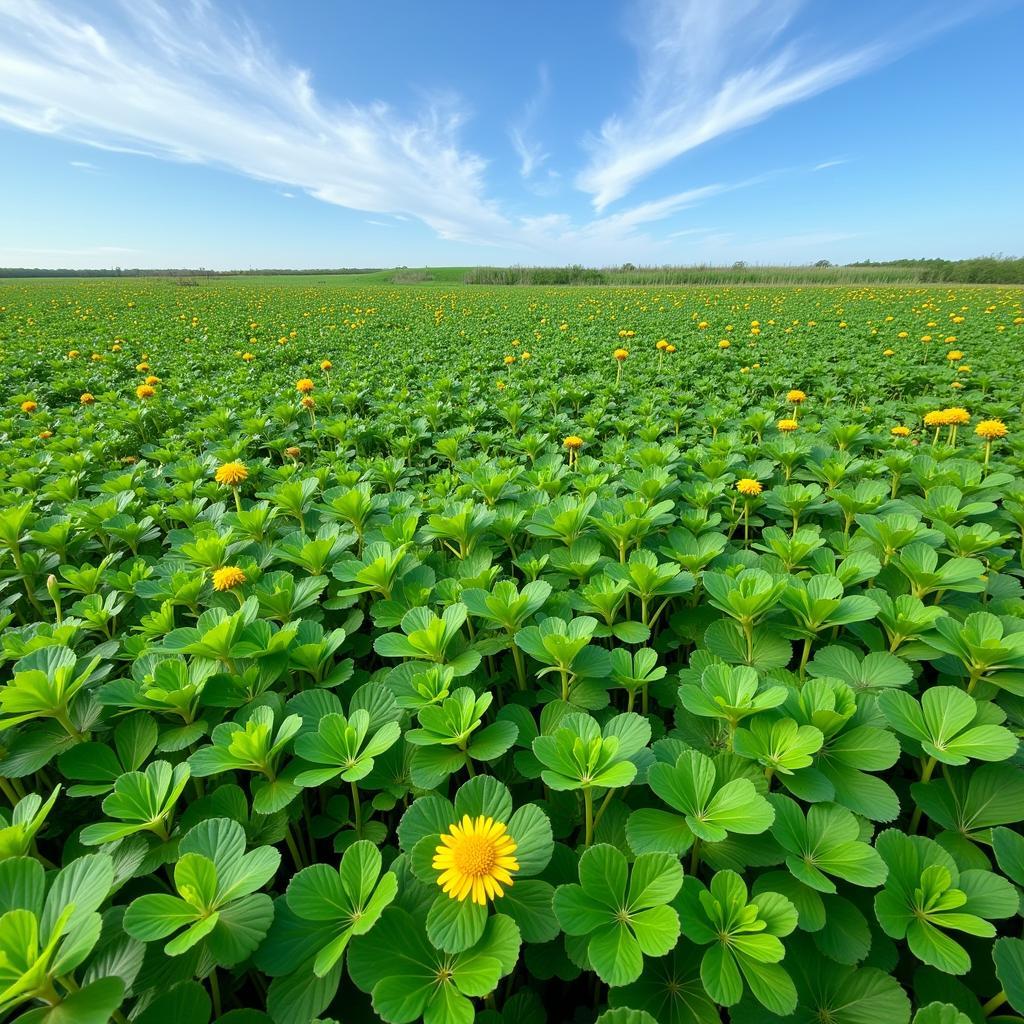For those dedicated to cultivating thriving food plots for wildlife, the lush allure of clover is undeniable. Clover offers a protein-rich food source and ground cover that benefits deer and other wildlife. However, the battle against invasive weeds can often feel like an uphill struggle. This article dives deep into effective weed control strategies for clover food plots, ensuring your green haven remains a haven for wildlife, not unwanted plants.
Understanding the Challenges of Weed Control in Clover Plots
Before we delve into solutions, it’s crucial to understand the challenges. Clover, with its delicate seedlings, can be easily overwhelmed by fast-growing weeds. These unwelcome guests compete for essential resources: sunlight, nutrients, and water, often hindering the clover’s growth. Factors such as soil type, climate, and the surrounding environment also play a significant role in the types of weeds you’ll encounter.
Proactive Planning: The Foundation of Weed-Free Clover Food Plots
The key to successful weed control lies in a proactive approach.
1. Soil Testing and Preparation:
Start with a solid foundation. Conduct a soil test to determine the pH level and nutrient composition. Clover thrives in slightly acidic soil (pH 6.0-6.5). Amend your soil based on the test recommendations to create an optimal growing environment for clover and, in turn, make it less hospitable for weeds.
2. Selecting the Right Clover Variety:
Did you know that different clover varieties exhibit varying levels of weed suppression? Opting for a fast-establishing, aggressive variety like Ladino clover can provide a competitive edge against weeds.
3. Planting at the Right Time:
Timing is everything! Seeding at the optimal time for your chosen clover variety gives it a head start. Consult local resources or seed packaging for specific recommendations in your area.
 Clover Seedling and Weeds
Clover Seedling and Weeds
Effective Weed Control Strategies for Clover Food Plots
1. Pre-Emergent Herbicides:
These herbicides, applied before weed seeds germinate, can significantly reduce weed pressure. They form a barrier in the soil, inhibiting weed seed germination. Be sure to choose a pre-emergent herbicide labeled for use on clover food plots and follow the instructions carefully.
2. Post-Emergent Herbicides:
For tackling existing weeds, post-emergent herbicides are your go-to solution. Selective herbicides target specific weed species while leaving your clover unharmed. Again, careful product selection is vital. Read labels thoroughly and opt for herbicides safe for clover.
atv food plot equipment can be immensely helpful for efficient herbicide application, especially for larger food plots.
3. Mowing:
Regular mowing can help control weed height and prevent them from going to seed. However, adjust your mowing height to avoid damaging the clover. A higher cut is best, leaving enough foliage for the clover to recover quickly.
4. Hand-Pulling:
While labor-intensive, hand-pulling weeds can be effective for small-scale infestations or for removing weeds that herbicides can’t target.
Maintaining the Upper Hand: Long-Term Weed Control
1. Regular Monitoring:
Vigilance is key! Regularly inspect your food plot for any signs of weed resurgence. Early detection makes control efforts more effective and less time-consuming.
2. Overseeding:
Over time, clover stands can thin, creating opportunities for weeds. Overseeding with fresh clover seed in the fall or spring helps maintain a dense, competitive stand that naturally suppresses weed growth.
3. Healthy Soil Practices:
Maintaining healthy soil through practices like soil testing, pH balancing, and adding organic matter promotes vigorous clover growth, making it more resilient to weed invasion.
 Healthy Clover Food Plot
Healthy Clover Food Plot
Conclusion
Achieving a weed-free clover food plot requires a multifaceted approach, blending proactive planning, effective control methods, and diligent maintenance. By understanding the challenges, implementing the right strategies, and remaining attentive to your plot’s needs, you can ensure a thriving clover haven that provides valuable sustenance and cover for your local wildlife. Remember, a little effort goes a long way in creating a thriving ecosystem that benefits both wildlife and the environment.